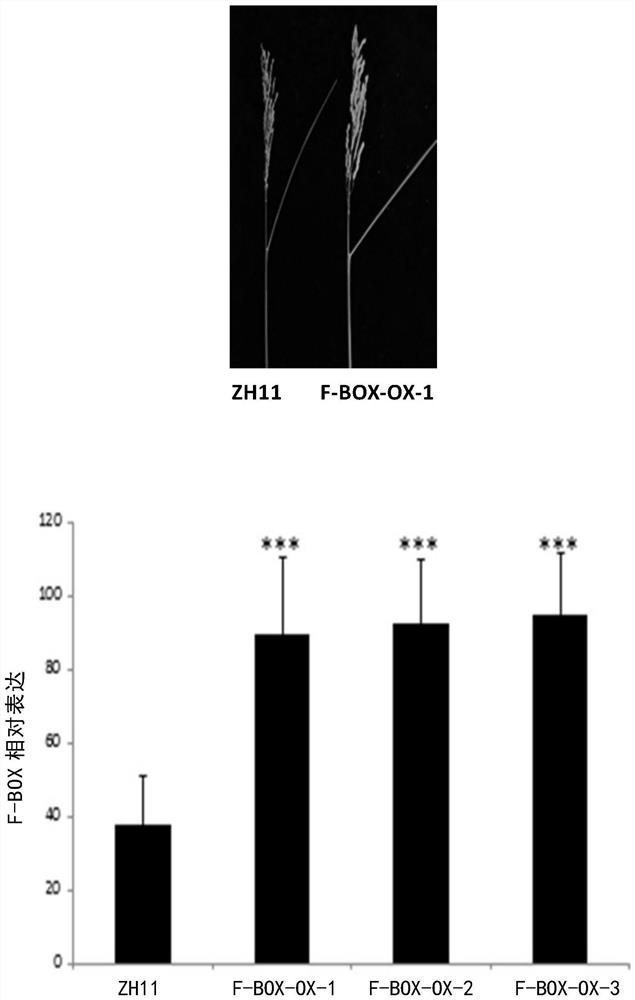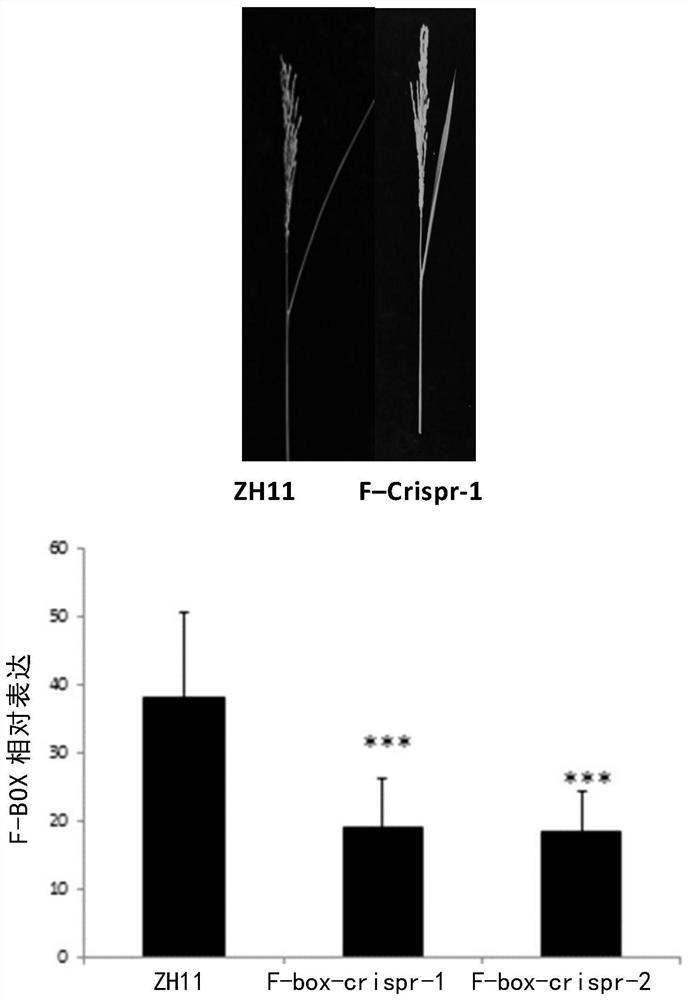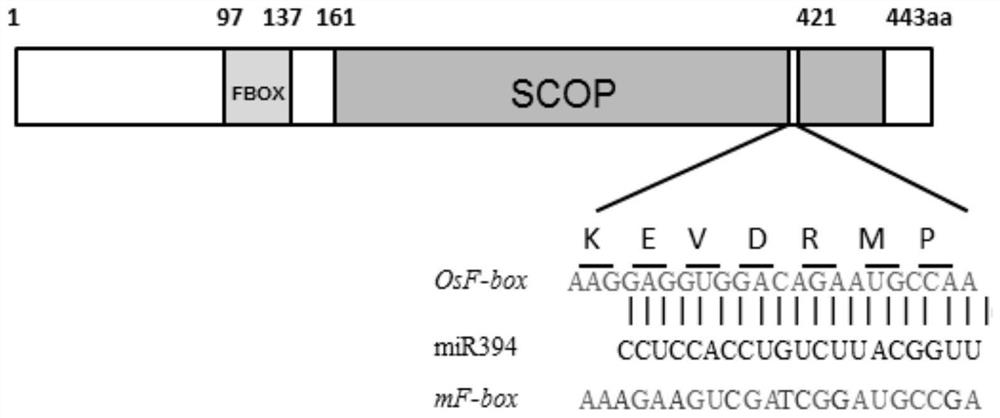F-box protein regulating leaf inclination and its application
An F-BOX, leaf inclination technology, applied in the fields of botany and genetic engineering
- Summary
- Abstract
- Description
- Claims
- Application Information
AI Technical Summary
Problems solved by technology
Method used
Image
Examples
Embodiment approach
[0064] As an embodiment of the present invention, the gene encoding the F-BOX protein is cloned into an appropriate vector by conventional methods, and the recombinant vector with the foreign gene is introduced into the plant cells that can express the F-BOX protein In, the plant cells are made to express the F-BOX protein. Plants overexpressing the F-BOX protein can be obtained by regenerating said plant cells into plants. Preferably, the gene encoding the F-BOX protein is transferred into plants by using the Agrobacterium transformation method.
[0065] The methods may be performed by any suitable conventional means including reagents, temperature, pressure conditions and the like. Other methods of increasing F-BOX expression are known in the art. For example, F-BOX expression can be enhanced by driving with a strong promoter. Or enhance the expression of the F-BOX gene through an enhancer. Strong promoters suitable for the method of the present invention include, but ar...
Embodiment 1
[0077] Example 1. Isolation of F-BOX gene and analysis of excess material phenotype
[0078] In the research on the regulation of rice leaf inclination, the inventors found that the F-BOX gene can regulate the rice leaf inclination.
[0079] The rice material with F-BOX overexpression was obtained by constructing the F-BOX overexpression vector F-BOX-over and transferring it into the rice material.
[0080] The vector construction method is as follows: by using the vector pCAMBIA1301. Using the ZH11 rice genome as a template, the F-BOX cDNA gene was amplified by primers P1 and P2, both of which contained KpnI restriction sites.
[0081] P1: C GGGGTACCATGGGGGAGGTGGCGGCGCTGC (SEQ ID NO: 4);
[0082] P2: CGGGGTACCTCAGGCCAAGGCAGAGGGGCAT (SEQ ID NO: 5);
[0083] KpnI was used for enzyme digestion and dephosphorylation treatment, and the product was subjected to agarose gel electrophoresis and gel cutting to recover, and then ligated into the pCAMBIA1301 vector after the same enz...
Embodiment 2
[0091] Example 2, Construction and Phenotypic Analysis of F-BOX Gene Knockout Materials
[0092] The inventors further edited the F-BOX gene through the Crispr-cas9 technology, designed a pair of primers F-BOX-gRNA-L and F-BOX-gRNA-R through the Crisprdesigner software, and constructed the F-BOX-Crispr-cas9 vector Knockout of the F-BOX gene was achieved.
[0093] F-BOX-gRNA-L:GGCACACTCAAGGAAATTCCGCGC (SEQ ID NO:8),
[0094] F-BOX-gRNA-R:AAACGCGCGGAATTTCCTTGAGTG (SEQ ID NO:9);
[0095] The vector construction of the gene knockout material is completed in two steps. Two vectors, the intermediate vector pOs-sgRNA and the final vector Ph-UBI-cas9-7 (both obtained from Peking University, see Cell Research (2013) 23:1233-1236 ), were used for vector construction. First, the primers F-BOX-gRNA-L and F-BOX-gRNA-R were diluted to 10Um, 10ul each was dissolved in 0.5XTE solution, and the 100ul system was annealed at 98°C for 5 minutes before use. The intermediate vector pOs-sgRNA wa...
PUM
 Login to View More
Login to View More Abstract
Description
Claims
Application Information
 Login to View More
Login to View More - R&D
- Intellectual Property
- Life Sciences
- Materials
- Tech Scout
- Unparalleled Data Quality
- Higher Quality Content
- 60% Fewer Hallucinations
Browse by: Latest US Patents, China's latest patents, Technical Efficacy Thesaurus, Application Domain, Technology Topic, Popular Technical Reports.
© 2025 PatSnap. All rights reserved.Legal|Privacy policy|Modern Slavery Act Transparency Statement|Sitemap|About US| Contact US: help@patsnap.com



